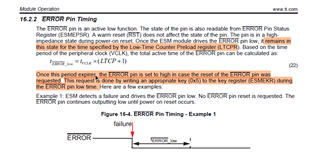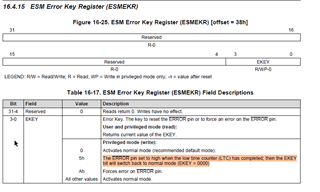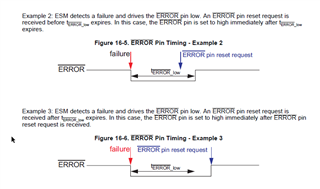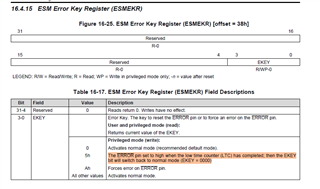Tool/software:
Hi experts,
some of my questions were answered in the previous post, but I observed some EKR-Register behaviour that is not explained.
- Let's take the following situation: A test triggers nERROR and then wants to reset nERROR by writing EKR = 0x5. Immediately afterwards the SW wants to a enter a safe state (due to some other error) and wants to force nERROR = LOW.
According to the previous post just writing EKR = 0xA will not work. So I had the idea to just reset EKR-Register to 0 and the write 0xA.
Setting EKR = 0 (while EKR is still 0x5) should not reset nError, since there is no EKR = 0x5 when the LTC hits 0, correct? - While playing around with nERROR and EKR I noticed the following behaviour:
- Writing EKR in quick succession does not seem to work. If I write EKR = 0x5 and EKR = 0x0, the second write is ignored. It seems to be the same if I write EKR = 0x0 and then EKR = 0xA .
Can you observe the same behaviour? - After nERROR is set due to an error in ESM, it should only be possible to reset nERROR by writing 0x5 to EKR. But I looks like it is also possible to write 0xA and then 0x0 to EKR and thus resetting nERROR.
Could you check if you see the same behaviour?
- Writing EKR in quick succession does not seem to work. If I write EKR = 0x5 and EKR = 0x0, the second write is ignored. It seems to be the same if I write EKR = 0x0 and then EKR = 0xA .
Thank you and best regards,
Max







